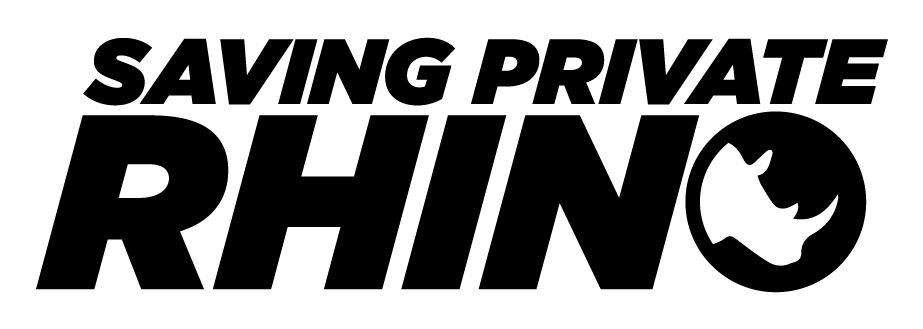What is Rhino Poaching?
Rhino poaching refers to the illegal hunting and killing of rhinoceroses, primarily for their horns. This practice has become a major conservation crisis, particularly in Africa and Asia, where rhinos are native. Poachers kill rhinos to obtain their horns, which are highly valued in some cultures for traditional medicine, ornaments, and status symbols, despite there being no scientific evidence to support any medicinal claims.
In 2023, over 499 rhinos were poached in South Africa, alone. Widespread and costly anti-poaching operations are the only deterrent standing between rhino poachers and the protection of these vulnerable creatures. Sadly, the ever-increasing black-market value placed on rhino horn has resulted in many game reserves and conservationists resorting to dehorning their rhinos or experimenting with radioactive or poisonous isotopes to help de-value their rhinos.
What is rhino horn made of?
Rhino horns are composed of keratin, the same protein that makes up human hair and nails. In rhinos, this keratin is chemically complex, containing large quantities of sulphur-containing amino acids like cysteine, along with other compounds such as tyrosine, histidine, lysine, arginine, and salts like calcium carbonate and calcium phosphate.
The Biggest Threat to Rhinos
Efforts to combat rhino poachers include increased anti-poaching patrols, stricter laws and penalties, community conservation programmes, and international bans on the trade of rhino horns. However, the illegal trade remains a significant threat due to the high value of rhino horns and the involvement of organised crime syndicates.
Why is Rhino Horn in Demand?
Rhino horn is used in Traditional Chinese Medicine, but increasingly common is its use as a status symbol to display success and wealth. Poaching is now a threat in all rhino range states, however, as South Africa is home to the majority of rhinos in the world, it is being heavily targeted. More than ever, our partners are investing heavily in anti-poaching activities.
Poachers are now being supplied by international criminal gangs with sophisticated equipment to track and kill rhinos. Frequently a tranquilliser gun is used to bring the rhino down, before its horn is hacked off, leaving the rhino to wake up and bleed to death very painfully and slowly. Poachers are often armed with guns themselves, making them very dangerous for the anti-poaching teams who put their lives on the line to protect rhinos.
The scarcity of rhinos today and the corresponding intermittent availability of rhino horn only drives the price of horn higher and higher, intensifying pressure on declining rhino populations. For people whose annual income is often far below the subsistence level, the opportunity to change one’s life by killing an animal that they don’t value is overwhelming.
Can rhino horn be sold on the international market?
Signatories to the Convention on the International Trade in Endangered Species (Cites) banned the trade in rhino horn in 1976. The Chinese government banned the use of rhino horn, or any other parts from endangered species, in Traditional Chinese Medicine, in 1993.
Can rhino horn be sold in South Africa?
The Minister of Environmental Affairs and Tourism published a moratorium on the trade of rhino horn and any derivatives or product of the horn within the country on 13 February 2009, in terms of Section 57(2) of the National Environmental Management: Biodiversity Act, 10 of 2004 (NEMBA). Rhino horn may be traded as part of a trophy obtained during a legal trophy hunt.
Saving Private Rhino
Private Game Reserves now conserve half the rhinos in Southern Africa as poachers continue to target Government-owned national parks and wildlife reserves. Private conservation is the only way forward.
Latest Statistics
Information is key to help stop rhino poaching. Stay up to date with the latest news and reports from the frontline. Help us keep anti-poaching initiatives and poaching statistics in the spotlight.
Help Donate
Donations make the biggest difference. From necessary rhino tracking equipment to gear used by anti-poaching units, donations help fund the war against poachers.
The Role of Traditional Chinese Medicine in Rhino Poaching
According to traditional Chinese texts, such as Li Shih-chen’s 1597 medical text “Pen Ts’ ao Kang Mu”, rhino horn has been used in Chinese medicine for more than 2,000 years and is used to treat fever, rheumatism, gout, and other disorders.
It also states that the horn could also cure snakebites, hallucinations, typhoid, headaches, carbuncles, vomiting, food poisoning, and “devil possession.” While it is commonly believed to be prescribed as an aphrodisiac, this is not the case. When used, the horn is shaved or ground into a powder, before being dissolved in boiling water and consumed.
The Power of Beliefs
As Richard Ellis, author of “Tiger bone and rhino horn” wrote in 2005 for the EAZA Rhino Campaign’s Info Pack: “It is not clear that rhino horn serves any medicinal purpose whatsoever, but it is a testimony to the power of tradition that millions of people believe that it does. Of course, if people want to believe in prayer, acupuncture or voodoo as a cure for what ails them, there is no reason why they shouldn’t, but if animals are being killed to provide nostrums that have been shown to be useless, then there is a very good reason to curtail the use of rhino horn.
Make no mistake: those people using rhino horn to cure medical ailments really believe it works. That’s what drives up the demand on which the poachers thrive. As Ann and Steve Toon commented in 2002, “For practitioners of traditional Asian medicine, rhino horn is not perceived as a frivolous love potion, but as an irreplaceable pharmaceutical necessity.”
Rhinos are being Poached towards Extinction
There are five species of rhinoceros and, with the exception of one subspecies of African White rhino, all are in danger of being hunted to extinction for their horns. Rhinos, as we know them, have been around for millions of years, but many scientists believe that the current demand and high value placed on rhino horn has created a threat from which they might never recover.
Is Rhino Horn really an Aphrodisiac?
There is a belief in Western countries that rhino horn is used as an aphrodisiac and sexual stimulant, but this is not correct and seems to have been misunderstood or misinterpreted by Western media. However, research has shown that people in Viet Nam are starting to believe this rumour as they are consuming it for new reasons.
Even without aphrodisiacal properties, however, rhino horn is one of the mainstays of Traditional Chinese Medicines, and its collection has been responsible for the death of tens of thousands of rhinos around the world.
The Demand for Rhino Horn in Vietnam
There has been a recent surge in demand for rhino horn in Vietnam. A survey, carried out by TRAFFIC in 2013, identified that the motivation for consumers buying rhino horn is the emotional benefit rather than medicinal, as it reaffirms their social status among their peers. Image and status are important to these consumers, as they tend to be highly educated and successful people who have a powerful social network and no affinity to wildlife.
Rhino horns are sometimes bought for the sole purpose of being gifted to others; to family members, business colleagues or people in positions of authority. TRAFFIC identified three main Rhino Horn consumer groups. Read the full report: New insights into the consumers behind rhino poaching.
What is the Status of Rhino Horn Trade?
The international trade in rhino horn has been banned under CITES (Convention on International Trade in Endangered Species of Fauna and Flora) since 1977. In South Africa it is possible to trade rhino horn domestically (within the country), after a legal battle to overturn the ban took place in 2017. There are wider calls from within the country to legalise the international trade in rhino horn.



